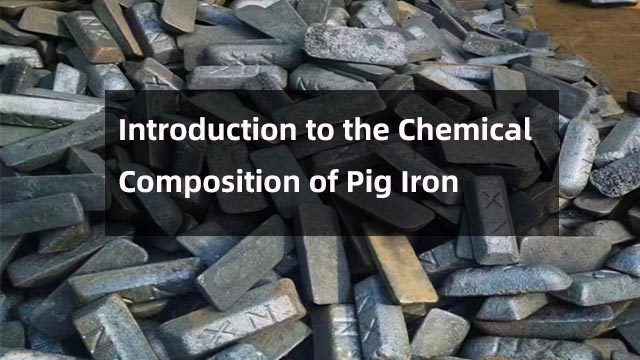Introduction to the Chemical Composition of Pig Iron
2025-02-06 11:09:25 hits:0
Introduction to the Chemical Composition of Pig Iron
Pig iron is an important basic metal raw material. Its chemical composition mainly includes elements such as carbon, silicon, manganese, phosphorus, and sulfur. The content and interaction of these elements have a crucial impact on the properties of pig iron.

Carbon
Carbon is one of the main components of pig iron, and its content is usually between 2% and 4%. In pig iron, carbon exists in two forms: cementite (Fe₃C) and graphite. Cementite increases the hardness and strength of pig iron, but also increases its brittleness. Graphite can improve the casting performance of pig iron. During casting, it helps the molten iron fill the mold and reduces casting defects.
Silicon
The silicon content in pig iron is generally between 0.5% and 3%. It has a deoxidizing effect and can combine with oxygen to form silicon dioxide (SiO₂), reducing the oxygen content in pig iron. An appropriate amount of silicon can promote the graphitization of pig iron, making more carbon precipitate in the form of graphite, thereby improving the toughness and strength of pig iron. However, if the silicon content is too high, the fluidity of pig iron will deteriorate, which is not conducive to casting.
Manganese
The manganese content in pig iron is usually between 0.5% and 1.5%. The main function of manganese is desulfurization. At high temperatures, manganese reacts with sulfur to form manganese sulfide (MnS), which is discharged through the slag, reducing the adverse effects of sulfur on the properties of pig iron. In addition, manganese can also increase the strength and hardness of pig iron and enhance its wear resistance. But if the manganese content is too high, the toughness of pig iron will decrease, and cracks are likely to occur during processing.
Phosphorus and Sulfur
Phosphorus and sulfur are harmful impurities in pig iron. The phosphorus content should generally be controlled below 0.1%, and the sulfur content needs to be controlled below 0.05%. Phosphorus can cause cold brittleness in pig iron. In a low - temperature environment, the toughness of pig iron drops sharply, making it easy to brittle fracture. Sulfur can cause hot brittleness in pig iron. During high - temperature processing, cracks are likely to occur inside the pig iron, seriously affecting product quality. In the steel - making process, refining processes are usually required to remove phosphorus and sulfur.

 en
en  fra
fra  de
de  ru
ru  gle
gle  th
th  ara
ara  it
it  jp
jp  kor
kor  zh
zh 


